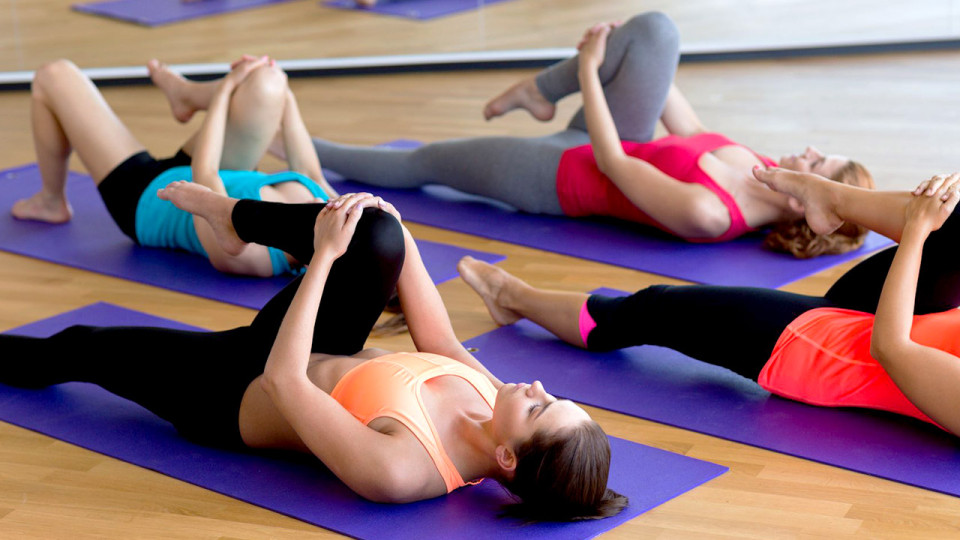It was a meaningful morning spent at one of the Great Eastern Women’s Run 2012 Fringe Activities: Peak your workout with Heart Rate Training workshop. The event was conducted at True Fitness (Suntec City mall) on Saturday, 6 October 2012 where participants were greeted by, Wendy, a Master Trainer from True Fitness. For many of the participants, it was their first time attending such a workshop.
Before we began the workshop proper, Wendy checked if any of the participants had any knee/ body pains. She also took this chance to share with us the use of ‘kinetic tape’ which is less restrictive on our body movements as compared to the traditional knee guards.
Resting Heart Rate
In order to gauge our level of fitness, it is basic to first know how to calculate our Resting Heart Rate (RHR). Wendy recommended that we count our heart beats for 10 seconds and then multiply the number of heart beats by 6; this allowed us to have a rough gauge of our RHR. It is more accurate to calculate this first thing in the morning when you wake.
Generally, prime athletes have a lower RHR of about 40 beats per minute. The general gauge of RHR for individuals in their 20s is about 60 heartbeats per minute, for in their 30s is about 65 to 70 heartbeats per minute and also 71 heartbeats and above for those who are aged 40 years old and above.
The calculation of RHR allows us to have a good gauge of our level of fitness before we embark on any training program.
Target Heart Rate using Karvonen Method
Wendy also talked about using the Karvonen method of calculating our exercise heart rate for weight loss and fitness improvement. The Karvonen Formula helps us to determine our Target Heart Rate (THR) zone. This is how you should calculate with your THR:
Step 1.
Calculate your maximum heart rate:
Maximum heart rate = 220- your current age
Step 2.
Calculate your heart rate reserve:
Heart rate reserve = Maximum heart rate – resting heart rate
Step 3.
Put all together in the formula below to calculate THR:
(Heart Rate Reserve x 0.55) + Resting Heart Rate = THR
This is the heart rate zone that we should aim to work within. It is advisable to stay within this target heart rate range as your body is working most effectively at this range during your cardio workouts. An alternative to manual calculation, you might consider the usage of a heart rate monitor while training as it is a precise way to gauge your heart rate.
More is Not Necessarily Good: Smart Weight Loss Strategy
Wendy is a strong advocate of the belief that women should love their bodies, how healthy an individual is very much depends on one’s body composition (i.e. body fat percentage versus lean body mass) as opposed to one’s body shape. For instance, a person who is 70kg can still be considered healthy with 20% body fats. Hence you can be fat but fit at the same time.
Wendy also shed light on the fact that more does not necessarily equate to better, that means more cardio exercises at one go does not mean that you will lose weight faster. Rather it is more effective for weight loss if you engage in a quality 30 to 45 minutes of body workout a day. The rationale being: for 30 minutes of exercise, the body uses glycogen as an energy source. For 30 to 60 minutes of exercise, the body will start to burn fats. However, if you were to engage in a workout that is more than 60 minutes, your body will be in a ‘survival mode’ which will start to use your muscles as an energy source. Bearing in mind that our muscles are important in helping to burn the fats in our body, we must be mindful not to deplete our muscles in this manner! Hence ladies, it is advisable to pick a good 30 to 45 minutes workout as opposed to engaging in different workouts for a long period of time. More is not necessarily good!

We must also practice mindful eating and to bear in mind to eat in moderation. Wendy emphasises that we should not stress ourselves further with calorie counting. For successful weight loss, it is important to eat less and move more!
Common Pains Associated with Running
Wendy also spent some time addressing the topic about knee pains. She dispels the misconception that knee pains are associated with a ‘bad knee’, rather it is due to the fact that we did not stretch enough before and after a run. To aid in our understanding, she explained that there are many muscles that surround our knee joints. When the muscles are not stretched enough, it results in unnecessary stress on the knee joints. She advised afflicted individuals to stretch more, as it helps with flexibility. A good 10 to 20 minutes of stretching before and after a run is highly recommended. Moreover, you will find that your run is more pleasant when your muscles are well warmed up.
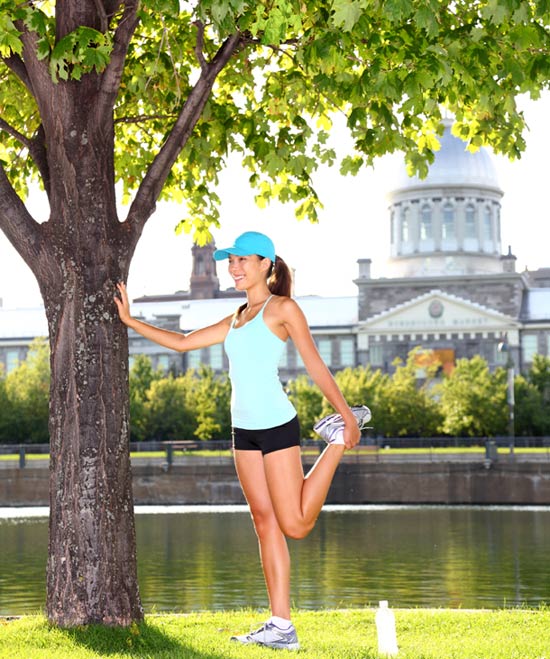
The opposite is true if you are engaging in weight training, as we want our muscles to be tight and stable and also for our joints to be taut. Thus, stretching is recommended only after you have completed your weight training exercise.
Other mentions of the causes of knee pain are bad feet positioning due to flat feet or poor choice of running shoes.
Quick Practical Tips for Beginning Runners
Listen to your body.
It is important for runners to be nice and kind to their body, as beginning runners it is vital to listen to our bodies and ration our energy during the run.
Do not compare.
We must also learn to continuously seek out opportunities to learn and improve and not to compare yourself with others as different runners have different running styles.
Wendy, Master Trainer with True Fitness, mentioned
It is important to be consistent and track yourself. It is important for beginning runners to be disciplined, such as setting a running schedule every week for yourself. Remember to run at your own pace. Be mindful of your safety, do not run when you are not feeling well. Do not push too hard, it is ok to cut back on your distance and pace if you are not feeling well. Be consistent. Remember that there is no race out there that is worth your health.
Simulate your Training Sessions to the Actual Race
With regards to training for race day, Wendy recommends scheduling training sessions that follow the conditions of the actual run itself. For instance, day and night time running conditions differ, hence try to find time to run in the morning, should you be taking part in a morning race.
It is also recommended to run outdoors as the road conditions are similar to that of the actual race itself. However, running in the gym is no lesser option especially preparing for a marathon, as it becomes a supplement to outdoor training.
Implement Strength/Circuit Training into Your Training Program
Wendy dispels the myth that strength training will cause muscles to bulk up. She encourages us to engage our bodies in resistance training. The muscles will be strengthened as a result of resistance training, this will help to tone the body as muscles are more efficient at burning body fats faster.
As such, we should start off with some form of strength training at home. With strength training, we are also able to stave off osteoporosis, as strength training helps our body to build up bone mass. Strength training is easy and hassle free as we can simply use our natural body as weights.
Wendy also recommends us to include circuit training into our training program. She advises us to interchange strength training exercises and cardio exercises in a high intensity 30 minutes to 45 minutes of circuit training workout.
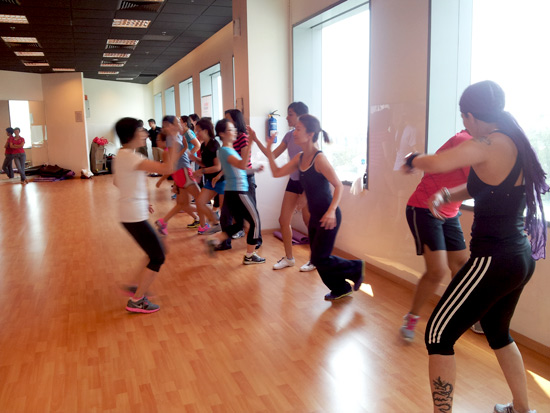
Ladies, half an hour of workout is better than no exercise at all. It is really up to us to find means and ways to get active!
Circuit Training
Participants were brought through a series of warm up stretches that specifically target the core muscle groups such as the hamstring, quads, arms, and abdominal muscles. It is highly recommended that we hold a stretch for 15 to 20 seconds and feel the stretch to be effective. Some of these stretches bear resemblance to yoga moves (e.g. butterfly, upper body stretch, lower body stretch etc.)
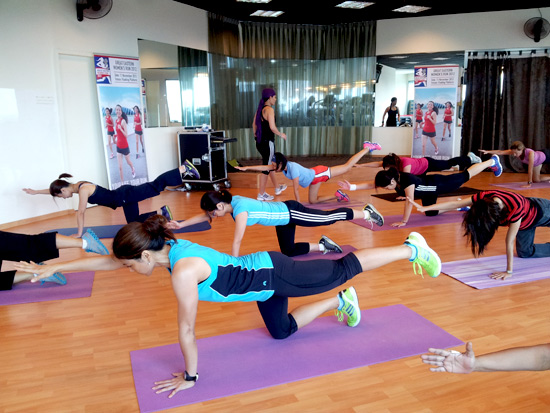
The muscles indeed felt more relaxed after the stretch as we engaged in a set of strengthening exercises that target our core muscle groups like squats, pushups, plank and side gallops. We also tested our agility with some non-competitive rounds of shuttle run with our buddies. The circuit training session ended with a series of cool down exercises.
Let’s Put This into Practice!
The workshop ended on a high note as the participants were greatly energised. Many left the workshop feeling satisfied having been equipped with the practical knowledge of calculating our heart rate and also effective body conditioning exercises that we can do in the comfort of our homes.
Wendy is not only professional in her delivery of the training contents but she is also truly inspiring to ladies who are new in the area of circuit/ strength training. She managed to keep the topic on Heart Rate Training as interesting and diverse as she could, engaging the audience with real life practical tips and examples. What could be a rather dry and technical topic was transformed into a lively and engaging one!
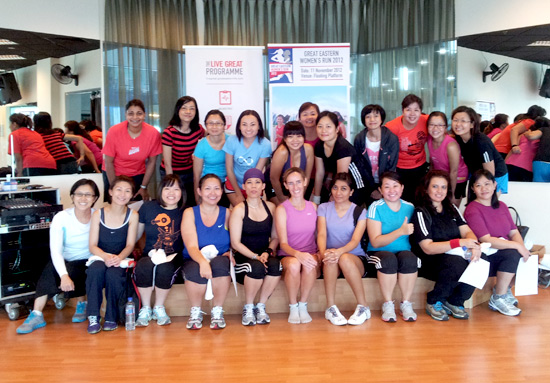
Now fellow runners, let us share this valuable knowledge and put this into practice. Here’s to better fitness. Go runners!
In conjunction with the Great Eastern Women’s Run, there will be other fringe activities coming up for runners to pick up as well. For more information, check out their official website at www.greateasternwomensrun.com.



